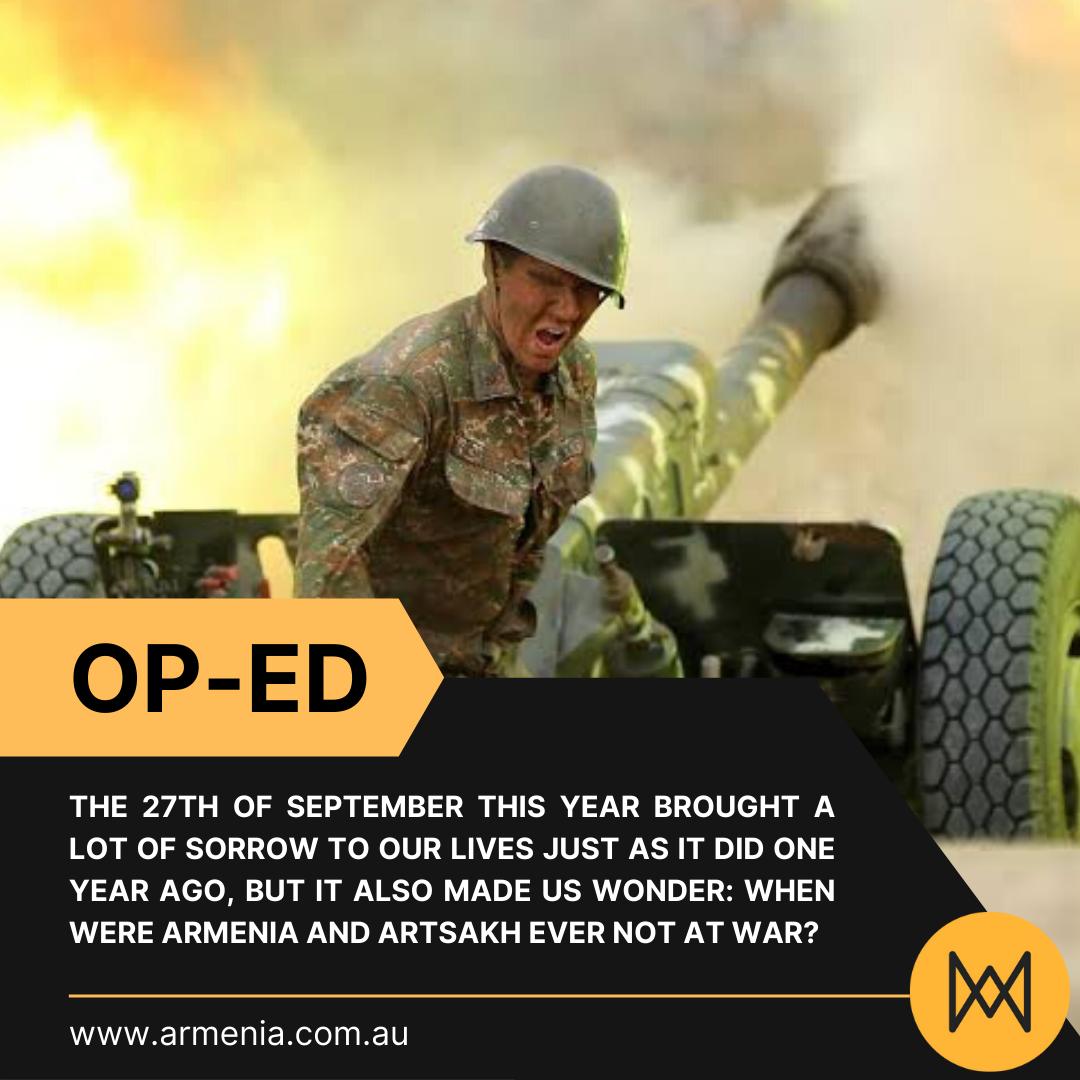By Aram Tufenkjian - Armenia Media | Wednesday, 20 October 2021
By Aram Tufenkjian – Armenia Media
The 27th of September 2021 marked one year since Azerbaijan, with the help of Turkey and Islamist Jihadist mercenaries, launched a full-scale military attack along the entire border of the Republic of Artsakh and into civilian-populated cities, ending the fragile peace since Baku’s previous major provocation – the Four-Day War of 2016.
The 27th of September marked the darkest day in recent Armenian history, and definitely the darkest witnessed by most of the Armenian population alive today. There is no doubt that the war began, but I don’t believe in calling the popular referencing of it as the 44-Day War. Because the war definitely isn’t over.
Ask the families of the prisoners of war still in Azerbaijani captivity. Ask those serving on the frontlines if they think the war is over.
Armenians every day are still living under a cloud of uncertainty – ‘peace’ is bound together by a loosely-written trilateral agreement between Armenia, Russia and Azerbaijan, which has been broken by the latter on many occasions over the past year. And Dictator Ilham Aliyev’s provocative actions show no signs of abating.
The war isn’t over. Just a few days ago, Azerbaijan attacked Yeraskh – a town on the border of recognised Armenia – injuring six soldiers, with two being in critical condition. Yeraskh is the same town that Azerbaijan attacked in July, with reports revealing the town is “under attack day and night”.
Yeraskh isn’t just being fired upon by Azerbaijan, but is literally being put on fire – with Azerbaijan setting fire to fields and 8000 stacks of dried grass, putting civilians lives at risk, as well as creating economic problems for many of those who make a living off that land.
It’s not the first time Azerbiajan has used this tactic, and it was only a few weeks ago that they started fires and then shot at the emergency service workers who were there to put out the blaze.
The war isn’t over. On 10 October, a 55-year-old Armenian civilian, Aram Tepnants was shot by an Azerbaijani sniper in Martakert while he was working on his pomegranate garden. The lives of our Armenian brothers and sisters aren’t safe, even after the so-called ‘peace’ agreement was supposed to allow them to get on with their lives.
The war isn’t over. There are still over 50 prisoners of war being held by the Aliyev regime, which goes against one of the principles engrained in the trilateral agreement. A video circulated on the internet of Aliyev and his Turkish counterpart Recep Tayyip Erdogan discussing the handing over of minefield maps, with the latter’s wife then laughing and telling Aliyev to release the prisoners step-by-step in exchange for more maps and leverage – a cunning tactic designed to terrorise.
The war isn’t over. Aliyev has on many occasions spoken about his ‘iron fist’ and that Armenians should learn from their lessons. This is a constant threat by the corrupt petro-dictator of more war and more attacks on Armenians.
The war isn’t over. Not long after the signing of the ceasefire, Azerbaijani forces entered into the borders of Armenia, surrounding areas around Sev Lake, living on the land for long enough that they decided to erect tents and set up camp on the country’s sovereign borders. Hostilities in the region led to civilians fearing for their lives and their livelihood, with the Armenian Government proving unable to secure its own borders and reaching out to the Collective Security Treaty Organisation (CSTO) for protection. Videos emerged of scuffles between Armenian and Azerbaijani soldiers, thankfully, no Armenian soldiers were killed, but the ease at which the invading soldiers were able to enter Armenia is a worrying sight for all.
The war isn’t over. The fourth point of the trilateral agreement states that Russian peacekeepers will be “deployed for 5 years, a term to be automatically extended for subsequent five year terms unless either party notifies about its intention to terminate this clause 6 months before the expiration of the current term”. Given the one-year mark of the ceasefire is approaching on 5 November, and Azerbaijan’s track record of aggression, another full-scale attack remains a distinct possibility.
The war is not over. Every day, this is proven again and again. That is why, as Armenians, we need to continue to work as we did between 27 September and 10 November 2020. We need to raise our voices again, we need to support the homeland again, we need to raise funds for those displaced, for the families of those who lost loved ones, for those who are still praying for the return of their sons, brothers and fathers.
The 27th of September this year brought a lot of sorrow to our lives just as it did one year ago, but it also made us wonder: when was Armenia and Artsakh ever not at war?
comments
Կոչ Հայութեան ու Հայրենիքի Իշխանութեան
Editorial:1918-2024. The Struggle for Independent, Sovereign Statehood Continues
Armenia Media Updates: 29 March 2023 Edition
Armenia Media Updates: 23 March 2023 Edition
#TogetherForSyria Telethon Raises over $110,000 for Armenians In Syria
10 August 2022: Week to Week by Armenia Media with Shahen Araboghlian
3 July 2022: Week to Week by Armenia Media with Shahen Araboghlian
17 June 2022: Week to Week by Armenia Media with Shahen Araboghlian